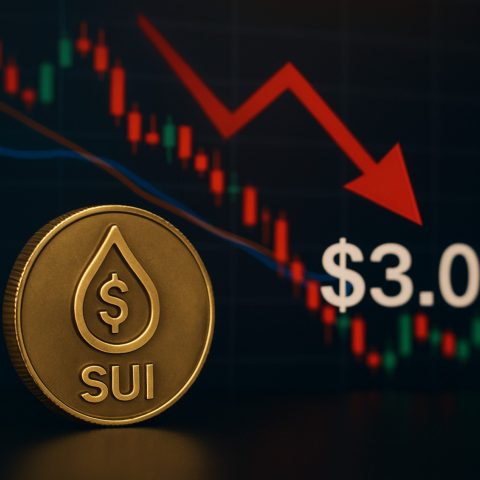A bold transformation has reshaped MicroStrategy, evolving from a $3.6 billion software entity to an astonishing $83 billion powerhouse. This metamorphosis has been largely driven by a relentless Bitcoin acquisition strategy spearheaded by Executive Chairman Michael Saylor since late 2020.
MicroStrategy’s strategic focus on Bitcoin has transformed its financial landscape. The company leverages low-cost capital to systematically purchase Bitcoin. The result? A staggering 2,205% surge in stock price (MSTR), showcasing how well investors have responded to this pivot. As traditional software operations remain intact, MicroStrategy is now recognized as a formidable player in the cryptocurrency realm, benefitting from factors such as greater regulatory clarity and institutional adoption.
Despite its phenomenal growth, challenges persist. A recent drop in Bitcoin’s value—from $106,000 to approximately $92,000—led to a 33.1% decline in MicroStrategy’s stock within a matter of months. The price premium over Bitcoin’s Net Asset Value (NAV) has also declined significantly, reflecting investor anxiety amidst fluctuating market conditions.
In the face of this turbulence, Saylor is doubling down on his Bitcoin investment belief, aiming for substantial capital raises through a comprehensive blueprint known as the “21-21 Plan.” This ambitious roadmap targets $42 billion, setting the stage for dramatic future acquisitions. With 450,000 Bitcoins now in its treasury, MicroStrategy stands as the largest corporate holder of Bitcoin, poised to continue its aggressive strategy even amid uncertainty.
The Broader Implications of MicroStrategy’s Bitcoin Strategy
MicroStrategy’s evolution into a leading entity in the cryptocurrency market symbolizes a significant shift not only for the company but also for the broader financial landscape. This transformation raises critical questions about the viability of traditional business models in an era increasingly defined by digital assets.
As MicroStrategy shifts from conventional software operations to a Bitcoin-centric focus, it reflects a wider trend of corporate America embracing crypto investments. This could potentially catalyze a ripple effect in the global economy, as more firms may feel compelled to incorporate digital currencies into their portfolios. Such a movement could enhance the legitimacy of Bitcoin, fostering broader acceptance among institutional investors and potentially stabilizing prices in the turbulent crypto markets.
On the environmental front, the Bitcoin mining processes associated with these investments prompt concerns over energy consumption and sustainability. As corporate engagement with Bitcoin escalates, so does scrutiny over the ecological implications of mining activities—an issue that demands robust solutions to balance profitability with environmental responsibility.
In terms of future trends, MicroStrategy’s aggressive stance may signal a shift towards a new paradigm in corporate finance, where the interplay between digital assets and traditional models becomes a norm rather than an exception. As insights gleaned from this bold strategy unfold, they will likely influence regulatory frameworks and corporate governance structures globally, marking a pivotal moment in the relationship between technology and finance, and shaping the contours of our economic future.
The Bitcoin Effect: How MicroStrategy Became a $83 Billion Titan
MicroStrategy’s Strategic Transformation
MicroStrategy has undergone a remarkable transformation, evolving from a $3.6 billion software company into an influential $83 billion powerhouse. This dramatic shift has been primarily fueled by a focused Bitcoin acquisition strategy, led by Executive Chairman Michael Saylor since late 2020. By leveraging low-cost capital, MicroStrategy has consistently added to its Bitcoin holdings, significantly boosting its market valuation and positioning within the cryptocurrency arena.
A Surge in Stock Price
As a direct result of its strategic pivot towards Bitcoin, MicroStrategy’s stock price (MSTR) has skyrocketed an astonishing 2,205%. This incredible surge illustrates not only investor confidence but also the effective execution of Saylor’s vision. The company has maintained its traditional software operations while simultaneously establishing itself as a dominant force in cryptocurrency, benefiting from increased regulatory clarity and wider institutional acceptance.
Challenges and Market Fluctuations
Despite substantial growth, MicroStrategy faces significant challenges. A recent decline in Bitcoin’s market value—from a high of $106,000 to approximately $92,000—has resulted in a 33.1% plummet in the company’s stock price in just a few months. Furthermore, the price premium over Bitcoin’s Net Asset Value (NAV) has shrunk, causing investor unease within the volatile cryptocurrency market.
The “21-21 Plan”: A Bold Strategy Ahead
In response to these market fluctuations, Michael Saylor is reaffirming his commitment to Bitcoin investments through the ambitious “21-21 Plan,” which aims to raise $42 billion for further acquisitions. This comprehensive strategy includes leveraging potential financing channels and capital raises to bolster MicroStrategy’s position.
Massive Bitcoin Holdings
Currently, MicroStrategy possesses an impressive 450,000 Bitcoins, confirming its status as the largest corporate holder of the cryptocurrency. This substantial treasury allows MicroStrategy to continue its aggressive acquisition strategy despite the inherent volatility and uncertainty in the crypto market.
Future Insights and Predictions
Looking ahead, analysts predict that as institutional adoption of cryptocurrencies continues to grow, companies like MicroStrategy may play a pivotal role in shaping the landscape. The ongoing debate about regulatory frameworks will likely influence market dynamics, warranting close attention from investors and stakeholders.
Pros and Cons of MicroStrategy’s Strategy
Pros:
– Aggressive Growth: Significant increase in stock price due to successful Bitcoin acquisitions.
– Market Leadership: Positioned as a leading corporate holder of Bitcoin.
– Strategic Vision: Innovative plans like the “21-21 Plan” indicate foresight and readiness for future investment.
Cons:
– Market Volatility: Vulnerability to Bitcoin price fluctuations, impacting stock price movement.
– Investor Anxiety: Concerns over declining price premium and potential risks associated with heavy cryptocurrency investments.
Conclusion
MicroStrategy’s transformation into a Bitcoin-centric powerhouse represents a groundbreaking shift in corporate investment strategies. As the largest corporate holder of Bitcoin, the company is well-positioned for future growth, but it must navigate the complexities of market volatility and investor sentiment carefully.
For more comprehensive information about stocks and investment trends, visit Investopedia.









